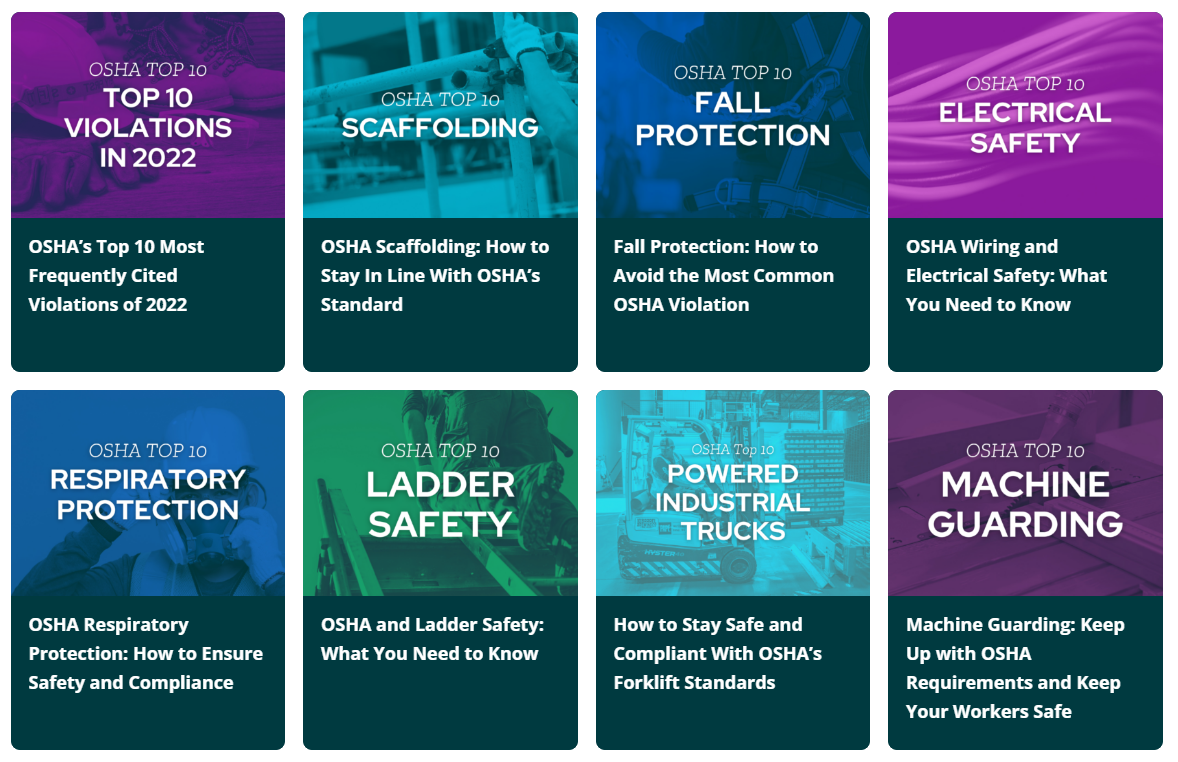OSHA Respiratory Protection Standard: What It Is
OSHA definition:
“In the control of those occupational diseases caused by breathing air contaminated with harmful dusts, fogs, fumes, mists, gases, smokes, sprays, or vapors, the primary objective shall be to prevent atmospheric contamination. This shall be accomplished as far as feasible by accepted engineering control measures (for example, enclosure or confinement of the operation, general and local ventilation, and substitution of less toxic materials). When effective engineering controls are not feasible, or while they are being instituted, appropriate respirators shall be used pursuant to this section.” (Source)
Simple definition:
Not all air is safe to breathe. The oxygen in a certain environment may contain hazardous fumes, dust, or other contaminants.
Common airborne contaminants include the following:
- particulate matter (e.g. silica dust)
- smoke
- gases
- mists
- vapors
- aerosols
These and other contaminants can cause short- and long-term health problems, such as…
- asthma
- bronchitis
- emphysema
- impaired thinking
- decreased lung capacity
- loss of consciousness
- cancer
OSHA’s respiratory protection standard outlines how organizations should minimize worker exposure to hazardous air.
First, the standard requires employers to assess and minimize airborne hazards if possible. But if controlling the environment isn’t possible or doesn’t provide adequate protection, employers must provide their workers with respiratory devices (usually called “respirators”). The standard lays out which respirators to use—and how to use those respirators—in various situations, along with maintenance, inspection, and medical follow-up procedures.
Which Kind of Respirator Is Required?
In general, respirators fall into two categories: air-purifying and atmosphere-supplying. According to OSHA, the former “use filters or sorbents to remove harmful substances from the air.” Such respirators “range from simple disposable masks to sophisticated devices,” but “do not supply oxygen and must not be used in oxygen-deficient atmospheres or in other atmospheres that are immediately dangerous to life or health.”
Atmosphere-supplying respirators, on the other hand, “are designed to provide breathable air from a clean air source other than the surrounding contaminated work atmosphere.” This category includes supplied-air respirators (SARs) and self-contained breathing apparatus (SCBA) units.
These respirators are not interchangeable. Air-purifying respirators are best used on a short-term basis, while atmosphere-supplying respirators can be worn for extended periods of time. In either case, the respirator must fit properly and “must not impair the worker’s ability to see, hear, communicate, and move as necessary to perform the job safely.”
Why Respiratory Protection Violations Happen
Many violations of OSHA’s respiratory protection standard happen when organizations fail to establish respiratory protection programs. If there are no written procedures in place, the organization is in trouble.
Some organizations fail to perform required fit testing. They don’t go through the trouble of making sure respirators fit snugly on workers’ faces, without interfering with vision, hearing, or communication.
Another common reason for OSHA citations are inadequate medical evaluations. Too many organizations neglect to provide their workers with evaluations by a physician or other licensed health care professional. Keep in mind that some workers may require follow-up evaluations based on their initial results, after reporting new symptoms, when working conditions change, or under other circumstances.
Many other violations occur due to inadequate training. Organizations can’t afford to take respiratory protection for granted or assume that workers know the proper procedures for respirator use.
What You Stand to Lose When Respiratory Protection Violations Happen
Direct costs: OSHA penalties can exceed $15,000 per violation—and as much per day for every day the issue hasn’t been fixed by OSHA’s deadline. The fine for a willful or repeated violation can be 10 times as much.
Indirect costs:
- workers’ compensation claims from workers exposed to toxic air
- lost productivity due to illnesses and injuries caused by airborne contaminants
- legal and compliance fees
- decreased morale
- negative publicity and reputational damage
Signs You’re at Risk of a Respiratory Protection Violation
How to Avoid a Respiratory Protection Violation: Your Prevention Checklist
You Don’t Have to Manage Your OSHA Requirements Alone
Have questions? Looking for more detailed OSHA compliance guidance?
KPA is here to help.
To truly protect your workforce and bottom line, you’ll need in-depth information—and not just about OSHA’s top 10, but every potential hazard that exists in your organization. You’ll also need to conduct a thorough evaluation of your facilities to identify current gaps and risk areas.
KPA’s unique combination of software, training, and consulting services can provide the coverage your people and your organization need. For more information and guidance about preventing a respiratory protection violation, please contact us.

